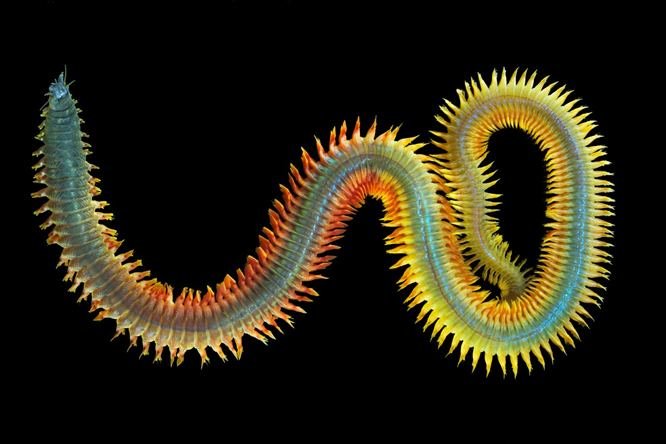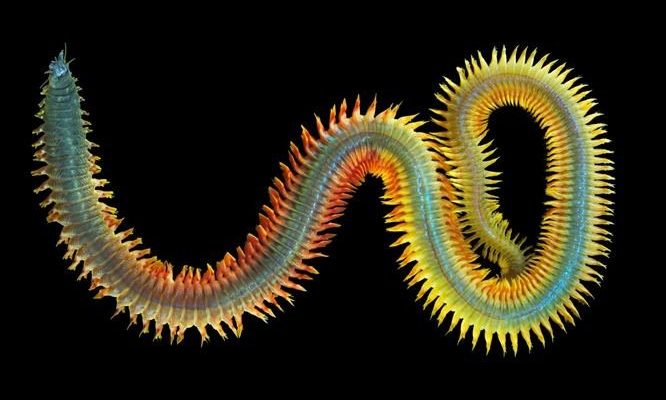
In this article, we’ll dive into the seasonal behavior patterns of marine polychaetes observed in field studies. Imagine we’re sitting at a café with a warm cup of coffee, and you’re eager to learn more. My goal is to break this down into bite-sized pieces, making it easy to understand even if you’re just starting out. So, grab your favorite drink, and let’s explore how these intriguing creatures change their habits with the seasons!
What Are Marine Polychaetes?
Before we jump into their seasonal behaviors, let’s clarify what marine polychaetes are. Polychaetes are a group of annelid worms, often known for their bristles and colorful bodies. They can be found in various habitats—like sandy seafloors, rocky crevices, and even in the mud of estuaries.
You might be wondering, “What distinguishes them from other worms?” Well, polychaetes have a variety of adaptations, including parapodia—little, fleshy limbs that help them swim, burrow, or cling to surfaces. They come in many shapes and sizes, from the tiny, almost invisible species to the larger, more flamboyant types that can reach impressive lengths.
Their diverse habitats and lifestyles make them unique. Some polychaetes are predators, hunting down smaller marine creatures, while others are filter feeders, sifting through water to catch tiny plankton. This diversity is key to understanding how their behavior shifts with the seasons.
Why Study Seasonal Behavior Patterns?
You might be asking, “Why should we care about how polychaetes behave seasonally?” Well, understanding their patterns helps scientists gain insights into broader ecological changes. Think of it this way: just as people adjust their clothing and activities according to the seasons, marine creatures also adapt to changes in their environment.
By studying these behavior patterns, researchers can track how factors like temperature, light, and food availability impact marine life. For example, when water temperatures rise in summer, polychaetes may become more active, influencing not just their populations but also the whole ecosystem, including fish that rely on them for food.
Furthermore, these observations help in conservation efforts. If we know how polychaetes respond to seasonal changes, we can better protect their habitats and ensure healthy marine environments for future generations.
Spring Awakening: Breeding and Growth
As spring rolls in, marine polychaetes begin to stir from their winter slumber. The warming waters signal the right time for breeding, and many species engage in fascinating reproductive behaviors. This is when you might see them in full display, with males and females engaging in a sort of underwater dance to attract mates.
During this period, polychaetes often undergo a surge in growth, utilizing the abundant food sources available. You’ll find them feasting on detritus and plankton, helping to recycle nutrients back into the ecosystem. The increase in biological activity during this time is essential for maintaining a balanced marine environment, and it’s like watching nature come alive after a long, cold winter.
Interestingly, some species even engage in swarming behavior, where large groups come together to maximize reproduction success. It’s a bit like a synchronized swimming routine, but in an entirely different context and environment!
Summer: Feeding Frenzy and Habitat Changes
Ah, summer! The warm waters bring a feeding frenzy among marine polychaetes. With temperatures rising, their metabolic rates increase, and they often become more active during this season. This heightened activity means they’re on the hunt for food much of the time.
As summer progresses, many polychaetes will migrate or change habitats based on food availability. For instance, some may move toward shallower waters where plankton blooms occur. During this time, they play a crucial role in controlling plankton populations and ensuring a healthy balance in the ecosystem.
In addition, the increased sunlight during summer can encourage algal growth, leading to shifts in the types of polychaetes present. Some species might flourish, while others may struggle, illustrating the delicate balance of life under the waves.
Autumn: Preparation for Winter
As autumn approaches, marine polychaetes begin to prepare for the colder months ahead. This transition is fascinating because it’s not just about surviving the winter; it’s about thriving. During fall, polychaetes often engage in feeding more aggressively to build up energy reserves.
Some species will also start seeking deeper waters as surface temperatures drop. This movement helps them avoid extreme temperature shifts and find more stable environments. Imagine them as cozying up in their warm, sandy burrows, preparing for the chilly winter months.
Additionally, autumn is a time when many polychaetes undergo physiological changes to cope with the impending cold. This might involve slowing down their metabolism or developing thicker bodies to withstand harsher conditions. These adaptations are crucial for survival and are fascinating examples of nature’s resilience.
Winter: Dormancy and Survival Strategies
When winter hits, the ocean can become a harsh environment for marine polychaetes. With lower temperatures and less food available, many species enter a state of dormancy. This doesn’t mean they’re entirely inactive. Instead, they slow down their metabolic rates and seek shelter in the sediments or hidden crevices.
During this time, some polychaetes might even reproduce, laying eggs that can survive the cold. These eggs are often adapted to withstand such harsh conditions, and when spring arrives, they’ll hatch, ensuring the continuation of the species. It’s a classic survival strategy—waiting for the right moment to emerge and thrive when conditions are favorable again.
You might notice that during winter, their numbers may dwindle, but they’re not gone. They’re just waiting for the sun to shine again. This season is a perfect reminder of nature’s cycles and resilience, showcasing how life adapts to the challenges of the seasons.
Studying the seasonal behavior patterns of marine polychaetes unveils the hidden complexity of ocean life. These creatures, often overlooked, are crucial players in maintaining healthy marine ecosystems. By observing how they adapt to seasonal changes, scientists can better understand the impacts of climate change, pollution, and habitat destruction.
So next time you think of the ocean, remember there’s a whole world beneath the surface where polychaetes are busy doing their part. Their seasonal behavior isn’t just about survival; it’s about thriving in an ever-changing environment. As we become more aware of these patterns, we can appreciate the rich tapestry of life that exists under the waves, encouraging us to protect these vital ecosystems for the future.

